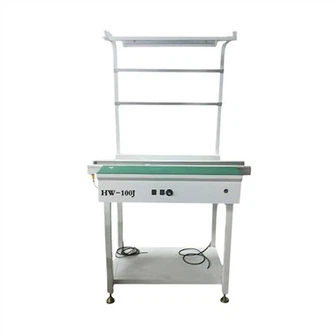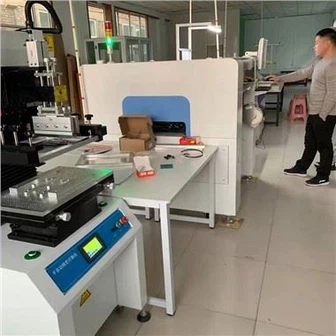What are the Accuracy and Speed of a Pick-and-Place Machine?
What are the Accuracy and Speed of a Pick-and-Place Machine?
The accuracy and speed of a pick-and-place machine are two critical performance metrics that directly impact the efficiency and quality of Surface Mount Technology (SMT) production lines.
Accuracy of a Pick-and-Place Machine
Accuracy refers to the ability of a pick-and-place machine to place electronic components onto the designated positions on a printed circuit board (PCB). It is typically measured in micrometers (µm) and includes two main aspects:
Placement Accuracy: This is the maximum deviation between the center of a component and its target position on the PCB. High placement accuracy ensures that components are correctly positioned, which is crucial for the functionality and reliability of electronic devices.
Repeatability: This measures the consistency of the machine in placing components at the same position over multiple cycles. High repeatability indicates stable and reliable performance.
High accuracy is essential for minimizing defects, reducing rework, and ensuring the overall quality of the final product.
Speed of a Pick-and-Place Machine
Speed refers to the number of components a pick-and-place machine can place per unit of time, usually expressed in components per hour (CPH). High-speed pick-and-place machines can handle a large volume of components in a short time, significantly boosting production efficiency.
The speed of a pick-and-place machine depends on factors such as:
The design of the placement head (e.g., single-head vs. multi-head).
The efficiency of the motion control system.
The complexity of the components and PCB layout.
The Relationship Between Accuracy and Speed
There is often a trade-off between accuracy and speed. Increasing the speed of a pick-and-place machine may sometimes affect its accuracy, especially when handling small or delicate components. However, modern pick-and-place machines use advanced technologies to balance these two factors:
High-Precision Motion Control Systems: These systems ensure fast and accurate movements of the placement head, minimizing deviations even at high speeds.
Advanced Vision Systems: High-resolution cameras and image processing algorithms enable real-time component alignment and correction, maintaining accuracy during rapid placement.
Optimized Algorithms: Smart algorithms optimize the placement sequence and movement patterns to maximize both speed and precision.
Importance of Accuracy and Speed in SMT Production
Quality Assurance: High accuracy ensures that components are placed correctly, reducing the risk of defects and improving product reliability.
Production Efficiency: High speed allows manufacturers to meet tight production schedules and increase throughput.
Cost-Effectiveness: By minimizing errors and maximizing output, pick-and-place machines with high accuracy and speed help reduce production costs.
Flexibility: Machines that balance speed and accuracy can handle a wide range of component types and PCB designs, making them versatile tools in SMT production.
Challenges and Innovations
As electronic components continue to shrink in size and increase in complexity, achieving both high accuracy and high speed becomes more challenging. Innovations in pick-and-place machine technology include:
Faster Motion Control Systems: Enhanced motors and control algorithms enable quicker and more precise movements.
Improved Vision Systems: Advanced cameras and AI-based image processing improve component recognition and alignment.
Modular Designs: Some machines feature modular placement heads that can be customized for specific speed and accuracy requirements.
Real-Time Monitoring: Sensors and software provide real-time feedback, allowing for dynamic adjustments to maintain performance.
Conclusion
The accuracy and speed of a pick-and-place machine are fundamental to the success of SMT production lines. High accuracy ensures the quality and reliability of electronic devices, while high speed maximizes production efficiency. With continuous advancements in motion control, vision systems, and AI, modern pick-and-place machines are achieving unprecedented levels of performance, enabling manufacturers to meet the growing demands of the electronics industry.
In summary, accuracy and speed are the cornerstones of pick-and-place machine performance, driving the efficiency and quality of modern electronics manufacturing. Balancing these two factors is key to staying competitive in the fast-paced world of SMT production.







